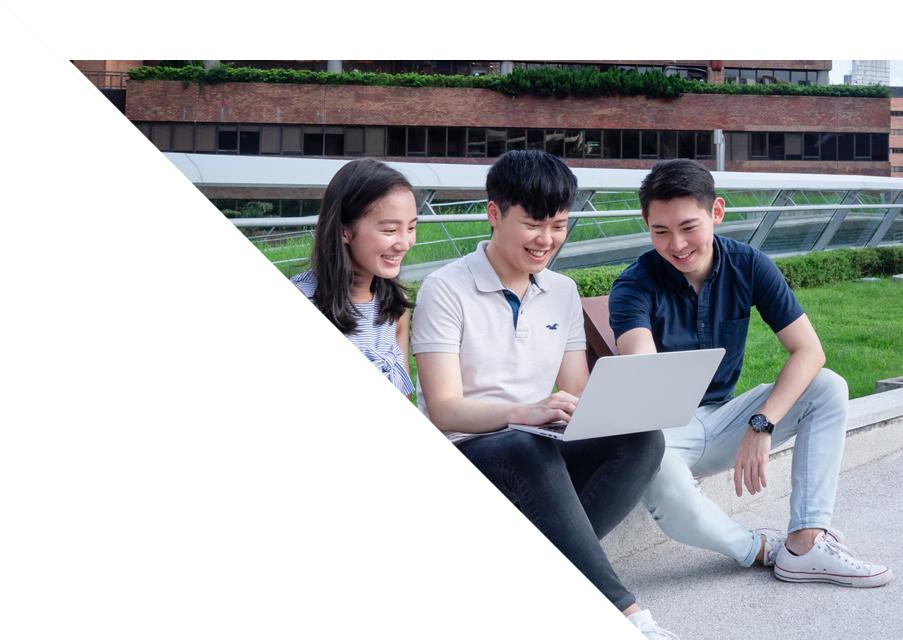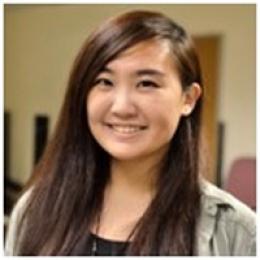Sept 2024 Entry
4 years
124 (plus 6 Training Credits for Product Design and Interaction Design Students)
Scheme Leader
Peter Hasdell
BSc (Arch), AA Dipl, RIBA, SAR
- Students will be awarded one of the following awards upon successful completion of the graduation requirements of the programme concerned:
BA (Hons) in Design (Advertising Design)
BA (Hons) in Design (Environmental Design)
BA (Hons) in Design (Information Design)
BA (Hons) in Design (Interaction Design)
BA (Hons) in Design (Interior Design)
BA (Hons) in Design (Media Design)
BA (Hons) in Design (Product Design)
BA (Hons) in Design (Service Design)
BA (Hons) in Design (Social Design)
Students are subject to further assessment criteria i.e. students' own choice, students' portfolio evaluation, interview performance, GPA and individual subject results in selection of awards at the end of their Year One study.
The option of Secondary Major in Innovation and Entrepreneurship (IE) is available to the students within BA (Hons) Scheme in Design.
The option of Secondary Major in AI and Data Analytics (AIDA) is available to the students who will enrol in BA (Hons) in Design (Product Design) or BA (Hons) in Design (Interaction Design).
Admission to the Secondary Major is on competitive basis and subject to a different credit requirement for graduation. Please see "Secondary Major Details" section.
Other Information:
Only applicants who select this programme as their Band A choice will be considered.
Applicants are required to submit a portfolio in June.
Upon the release of the HKDSE results, applicants will be shortlisted for interviews. Shortlisted applicants will be invited for an individual interview with their physical/digital portfolio, along with prototypes or models (if applicable).
Top HKDSE Scorers (e.g. average weighted score 5 in 2023/24) will be exempted from portfolio submission in June and invited for an admission interview after JUPAS result announcement.
What's New
Programme Aims & Learning Outcomes
The BA (Hons) Scheme in Design equips students with the skills, knowledge, and abilities necessary to become the designers of tomorrow. The Scheme emphasises the integration of design and its relevance to society, the needs of a changing world, digital readiness and technological integration with the digital world, the growing need for design entrepreneurship and innovation, and the need for future designers to possess inter-disciplinary capabilities.
In addition to developing core design skills, students develop the ability to think critically, learn independently, explore multi-layered design processes, conduct design exploration, work individually and in teams, develop social and cultural understanding, seek technical solutions to design problems, work with others outside of design, and pursue new design directions and solutions that extend their creative ability.
The uniquely structured Scheme enables students to choose personalised study pathways to develop their unique skills and abilities. It offers an integrated and holistic approach that leads students from general to specialised education in nine different Design Specialisms: Advertising Design, Environmental Design, Information Design, Interaction Design, Interior Design, Media Design, Product Design, Service Design, and Social Design.
International perspectives and opportunities enable students to learn about design in other contexts. The Scheme includes overseas exchange opportunities, study trips, internship and collaborations. The School’s close connections with the regional design industry allow students to participate in real-world design projects with direct input from the industry, as well as undertaking summer industry internships.
Programme Characteristics
Students applying for the Scheme may choose from nine Design Specialisms:
- BA (Hons) in Design (Advertising Design)
- BA (Hons) in Design (Environmental Design)
- BA (Hons) in Design (Information Design)
- BA (Hons) in Design (Interaction Design)
- BA (Hons) in Design (Interior Design)
- BA (Hons) in Design (Media Design)
- BA (Hons) in Design (Product Design)
- BA (Hons) in Design (Service Design)
- BA (Hons) in Design (Social Design)
The Scheme is ranked among the top design programmes in the world. Admission is highly competitive. We welcome candidates who are dedicated to becoming aspiring designers. Are you an expert in conceptualising spatial design? Are you a master in communication and producing high-quality visual content? Do you have unique ideas for improving the use and design of everyday products? Do you find it easy to imagine new services, innovation and entrepreneurial opportunities in the social and cultural sectors?
Qualifying applicants must have a strong interest in design and possess creative curiosity, good visual skills and abilities, skills in three-dimensional or mixed media, the ability to explore and develop ideas, and the capacity to solve problems. They will be interested in how design can address issues in today’s society and contribute to making the world a better place.
Characteristics of Scheme-based Admission
Students first follow a common curriculum under the Scheme.
This Scheme-based admission serves as an undeclared track. It offers students' approximately a year to identify their area(s) of interest and career aspirations, which facilitates their Major programme selection.
The decision to admit a student to a major will be made by the School based on the student's own choice, portfolio evaluation, interview performance, GPA and individual subject result. Students will be asked to rank their major choices (from the most preferred one to the least) during the semester 2 (probably before final examination) of their Year One study for the School's consideration and approval.
Career Prospects
Our broad-based education approach nurtures all-round design talents with robust design skills who are ready for a wide range of career paths in design.
Graduates of the BA (Hons) in Design (Advertising Design) can pursue careers in the advertising industry as art directors, copywriters, marketing/digital marketing executives, interactive advertising directors, account executives, and electronic commerce managers.
Graduates of the BA (Hons) in Design (Environmental Design) can build careers as architectural designers, spatial designers, experts in ecology and conservation, urban space designers, landscape designers, and consultants for sustainability design.
Graduates from BA (Hons) in Design (Information Design) can seek careers as designers in corporate identity and publications, web designers, graphic designers, exhibition and packaging designers, information designers, and motion graphic designers.
Graduates of the BA (Hons) in Design (Interaction Design) can become interaction designers, user experience designers, visual designers, game designers, and content generators in innovative fields such as information technology, interactive products and services.
Graduates of the BA (Hons) in Design (Interior Design) can pursue careers as interior designers, interior architectural designers, spatial designers, designers in spatial identity and branding, set designers, exhibition designers, furniture and furnishing designers, lighting designers, landscape and interior-scape designers, and experience designers.
Graduates of the BA (Hons) in Design (Media Design) can seek careers as filmmakers and producers in the world of digital media, digital entertainment, media production in creative businesses, such as new media, film and animation production, and digital media content production.
Graduates of the BA (Hons) in Design (Product Design) can pursue careers as industrial and product designers, product stylists and branding consultants, product systems designers, concept innovators, design managers, designers for product manufacturers, and product design consultants.
Graduates of the BA (Hons) in Design (Service Design) can develop careers as service designers, strategic designers, user experience strategists, design consultants, customer experience designers, and start-up entrepreneurs in the fields of mobility, communication, tourism and hospitality, healthcare, finance, retail, education, entertainment, and government.
Graduates of the BA (Hons) in Design (Social Design) are equipped to become project designers, creative coordinators, and social entrepreneurs in community-based social and cultural businesses, bottom-up cooperatives, social innovation agencies and inter-disciplinary design consultancies.
The BA (Hons) in Design Scheme is a four-year full-time study honorary degree. All students complete a common Design Foundation in Year 1, followed by a Design Cluster in Year 2, before focusing on their chosen Design Specialism in Year 3 and 4. Each specialism has a dedicated study pathway with some common subjects. Students graduate from the Scheme in one of the following nine Design Specialisms: Advertising Design, Environmental Design, Information Design, Interaction Design, Interior Design, Media Design, Product Design, Service Design, and Social Design.
Year 1 Design Foundation: Common Basics
The focus of Year 1 is to provide a broad-based foundation in common design skills, knowledge, and integration to enable students to become creative thinkers. It exposes students to a wide range of design disciplines and approaches covering design history and the theories and techniques necessary for students to succeed in all of the programmes offered by the School of Design. The year introduces students to design thinking processes, design skill-based courses and value-based innovation and design collaboration skills for developing studio projects.
Year 2 Design Cluster: Inter-disciplinary Collaborations
Year 2 students select one of four Design Clusters: Communication Design, Environment Design, Product Experience Design, and Service Design. The four clusters provide a broad base of discipline-oriented study in preparation for specialisation in Year 3 and 4. Students in Year 2 develop a range of essential skills through technical courses in digital skills, design theories and culture, and the practice of inter-disciplinary collaborations. Students choose their preferred Design Specialism at the end of Year 2.
Year 3 Design Specialism: Discipline Exploration
Year 3 is the first year of discipline-specific study in one of the nine Design Specialisms offered: Advertising Design, Environmental Design, Information Design, Interaction Design, Interior Design, Media Design, Product Design, Service Design, and Social Design. Students explore their chosen Design Specialism through dedicated study pathways in discipline-specific subjects. Compulsory inter-disciplinary subjects, such as design entrepreneurship, encourage cooperation between students of diverse expertise. Design Studios offer a testing ground for the knowledge and skills learned in design projects.
Year 4 Design Specialism: Integrative Design
Year 4 is the second year of the Design Specialism. This programme develops students’ critical and professional abilities in design. Students learn to tackle complex design issues through external client-focused and inter-disciplinary studio projects. Students also research and negotiate a final design proposal, known as a Capstone Project, in which they demonstrate their ability to overcome sophisticated and multi-faceted challenges.
Students are required to complete a total of 124 credits to graduate, including 30 credits from General University Requirements subjects, 31 from Common Compulsory Subjects, and 63 from Discipline-Specific and Elective Subjects.
The option of Secondary Major in Innovation and Entrepreneurship (IE) is available to the students within BA (Hons) Scheme in Design.
Features
- Equip outstanding undergraduate students with skills for versatile developments according to their aspirations, ability and interests.
- Provide a flexible structure for students to gain necessary skill and capability for start-ups.
- Furnish students with the global language of business and prepare them for opportunities in an increasingly interconnected world.
Subjects could be served as double counting:
- Innovation and Entrepreneurship (IE): Introduction to Marketing, Design for Social and Cultural Business, Interactive Media and Marketing
The option of Secondary Major in AI and Data Analytics (AIDA) is available to the students who will enrol in BA (Hons) in Design (Product Design) or BA (Hons) in Design (Interaction Design).
Features
-
Nurture new generation of designers to focus on the integration of the emergent technologies in user experience, system thinking, data visualization, prototyping, and game design, meanwhile with sensitivity and understanding about community, culture, and history.
-
Perform contextual reviews and make critical judgment after considering multiple approaches to and possible implications of AI and data analytics in different scenarios.
-
Manipulate various tools in the iterative design process, including research, analysis, ideation, concept development, prototyping, testing, technical implementation, and evaluation.
Subjects could be served as double counting:
- AI and Data Analytics (AIDA): Integrated Capstone Project, Interactive Media and Marketing
Remark:
AI and Data Analytics (AIDA): Preference will be given to students with science background particularly physics and/or mathematics core and/or extended mode
For the Secondary Major graduation requirement, please refer to Admission Policies of The Hong Kong Polytechnic University for details.
Satisfy the University's General Entrance Requirements.
The School of Design welcomes applications from students with a broad range of academic and cultural interests. Student applications from both arts and sciences streams are accepted, and those who have an interest in design, liberal studies, visual arts and/or other cultural and technology disciplines are encouraged to apply to the programme.
Please click here for the subject weightings for 2024/25.
There is no compulsory subject requirement. Preferred subject(s) with the highest weighting for admission score calculation include(s):
Applied Learning Subjects:
Relevant Applied Learning subject(s) that can be considered for meeting the University entrance requirement and admission score calculation is/are:
2023/24 Average Score: Any Best 5 Subjects (with Subject Weighting) = 212.6
For further programme information, please contact
the General Office:
Tel: 2766 5488; Email: wting.chan@polyu.edu.hk
Tel: 2766 4353; Email: jennifer.lo@polyu.edu.hk
1. To understand the potential of applicants for the BA(Hons) in Design at the degree level
2. To ascertain whether applicants’ expectations of the programme/career path match what we aim to provide
3. To evaluate the language, communication and interpersonal skills of the applicants.
Portfolio submission (MUST); interview with portfolio presentation (about 15-20 minutes)
-
Only Band A applicants will be considered for admission.
-
Applicants are required to submit a portfolio in June.
-
Upon the release of HKDSE results, applicants will be shortlisted for interview. Shortlisted applicants will be invited for an individual interview with their physical/digital portfolio, along with prototypes or models (if applicable).
-
Top HKDSE Scorers (e.g. average weighted score 5 in 2024/25) will be exempted from portfolio submission in June and invited for an admission interview after JUPAS result announcement.
Important dates:
Mid-/end of March – Admission schedule/details announced via email
Mid-June – Portfolio submission
Mid July – HKDSE results announced
Mid-/end of July – Admission interviews
Required
Copies of public examination result slip(s) demonstrating applicants' English language proficiency, e.g. HKDSE, HKALE, HKCEE, IELTS, TOFEL, etc.
1. To understand the potential of applicants for the BA (Hons) in Design at the degree level;
2. To ascertain whether applicants’ expectations of the programme / career path match what we aim to provide;
3. To evaluate the language, communication and interpersonal skills of the applicants.
About 15-20 minutes
Step (1) Applicants are required to submit portfolios by early round/main round application deadline.
Step (2) Shortlisted applicants will be invited for an individual interview with their physical / digital portfolio, along with prototypes or models (if applicable), from November to April.
For details, please refer to the portfolio information sheet.
Click here for the guideline
Required
1. To understand the potential of applicants for BA (Hons) in Design at the degree level;
2. To ascertain whether applicants’ expectations of the programme / career path match what we aim to provide;
3. To evaluate language, communication and interpersonal skills of the applicants.
About 15-20 minutes
1. Applicants are required to submit softcopy portfolio by the application deadline.
2. Shortlisted applicants will be invited for an individual interview with their physical / digital portfolio, along with prototypes or models (if applicable).
3. For details, please refer to the portfolio information sheet.









